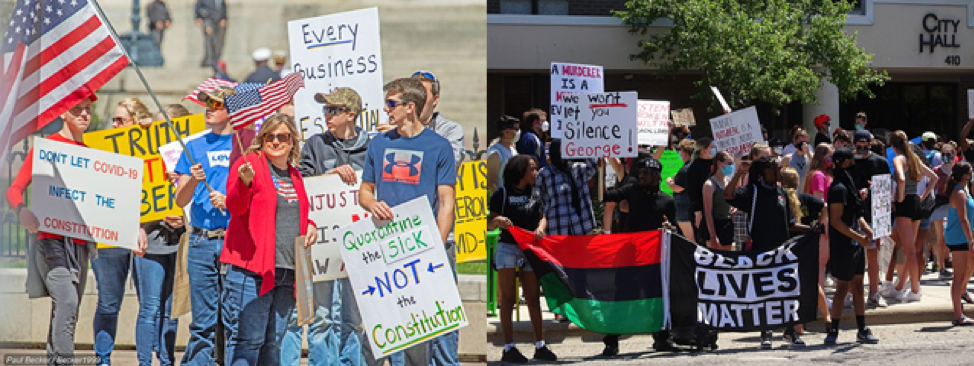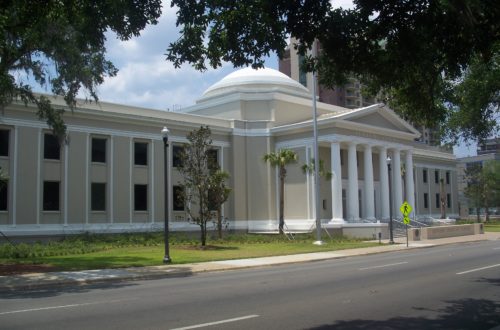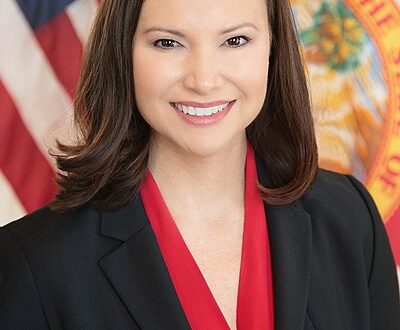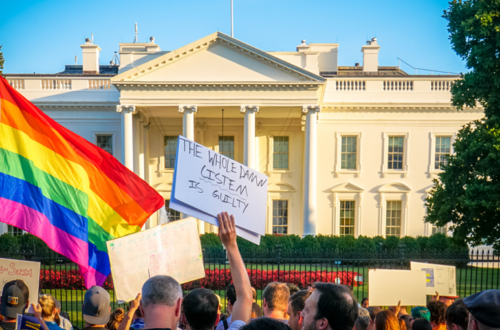“Congress shall make no law…abridging… the right of the people peaceablyto assemble, and to petition the Government for a redress of grievances,” states the first amendment—as American as apple pie. The key phrase is “no law.” This means that even a global pandemic requiring strict social distancing measures is no match for the American people’s right to protest.
In recent weeks, the nation has experienced two types of protests addressing two types of pandemics.
In April, anti-lockdown protests were born out of fear of “tyranny,” according to The Atlantic. They echoed with desperation for some degree of normality and frustration over a mess of COVID-19 news. Journalists, doctors and scientists alike were understandably struggling to tame an illness that has shocked the planet.
President Trump’s clever stunt of refusing to wear a mask downplayed the perceived severity of the virus among his base. This subtle propaganda is just another element that makes fellow politicians cringe. Steve Morrison, director of Global Health Policy, revealed that Trump’s strategy for combating COVID-19 “has been a… haphazard patchwork… overpromising and under delivering,” effectively leaving “states on their own.”
When an individual in the center of public attention adopts a relatively hands-off approach to the virus, people will undoubtedly call into question the strict measures used to prevent its spread.
The build-up of tension between the federal government, states and citizens combined with a lack of media consensus regarding the urgency of the virus inevitably reached a boiling point. Anti-lockdown protests were an outlet to let off steam.
These protests reflect poorly directed cries for freedom and an absence of logic. Sure, Americans are tired of being forced to stay home, losing previously secure jobs, missing life milestones, and not knowing when the hysteria will end. However, it is necessary to acknowledge that risking contraction of COVID-19 in order to protest restrictions designed to curb COVID-19 is counterproductive.
Anti-lockdown protesters facilitate the spread of the virus, which prolongs the restrictions protesters so deeply abhor. They criticized a temporary system designed to protect allAmericans, yet their presence was self-destructive.
A few weeks after anti-lockdown rage rose and subsequently fell as nationwide coronavirus precautions loosened, another wave of protests began. This time, however, the protests were carrying a different sense of urgency.
In the wake of yet another series of deaths of innocent black Americans, anti-racist cries are being heard from protesters in all 50 states. South Florida has seen a series of protests, with one in Miami requiring local police to temporarily close Interstate 95.
The chants of protesters expose the pandemics of systemic racism and police brutality, which cannot be treated by hospitalization or social distancing. Despite their undeniable necessity, protests against racial injustice once again raise the familiar question of how they fit into a post-coronavirus reality.
Protests demanding racial justice address an issue woven into the foundations of this nation that has led to inexcusable discrimination, disrespect, division and death. They are a step forward, a rallying cry from millions of Americans that attempts to fix a dysfunctional system. Herein lies the contrast to anti-lockdown protests, which aim to break the functioning system of social distancing.
People showed up to protest COVID-19 lockdown measures because they felt that their freedom to enjoy and thrive in everyday life was threatened. John McDaniel, a resident of Marion, Ohio, who strongly resented lockdown safety measures, wrote in a slew of Facebook posts, “If you are paranoid about getting sick, just don’t go out.” Stating that others should not be prevented from “living [their] lives.” He died a few weeks later from COVID-19.
Whether or not it was their intention, individuals who protested COVID-19 safety measures communicated that curbing a public health crisis is secondary to personal preferences.
On the contrary, people showed up to protest racial injustice because they felt that freedom to live was threatened for people of color. Unlike the novel coronavirus, racism is persistent and does not have a foreseeable end marked by a vaccine. It is perpetuated by bias, police brutality, and a seemingly growing divide between the beliefs and values of the American public. Racial injustice does not take the back seat to a public health crisis.
More recent anti-racism protests deliver pleas and ideas to prevent innocent Americans from dying while anti-lockdown protests denounced measures aimed to stop death. Anti-racism protests encourage the betterment of a nation beyond the span of COVID-19 while anti-lockdown protests prolonged its illness.
LEFT: Anti-lockdown protesters in April. (Unmodified photo by Becker used under a Creative Commons license. https://bit.ly/2MZQU5c) RIGHT: Anti-racism protesters in June. (Unmodified photo by Guettarda used under a Creative Commons license. https://bit.ly/2B6Pvr2)





